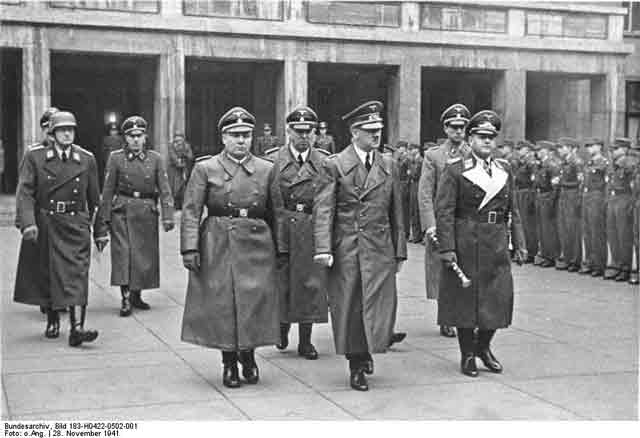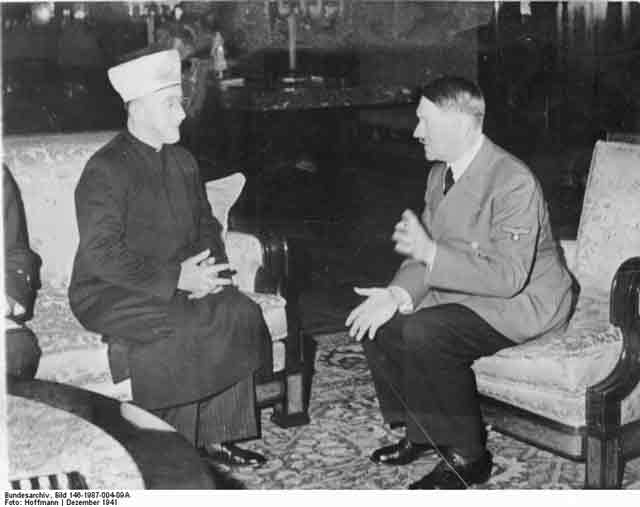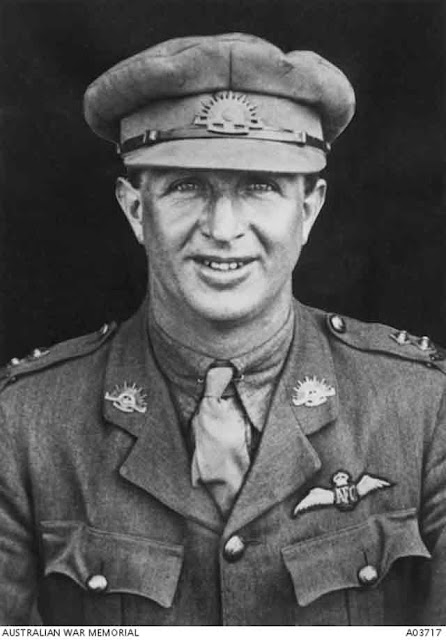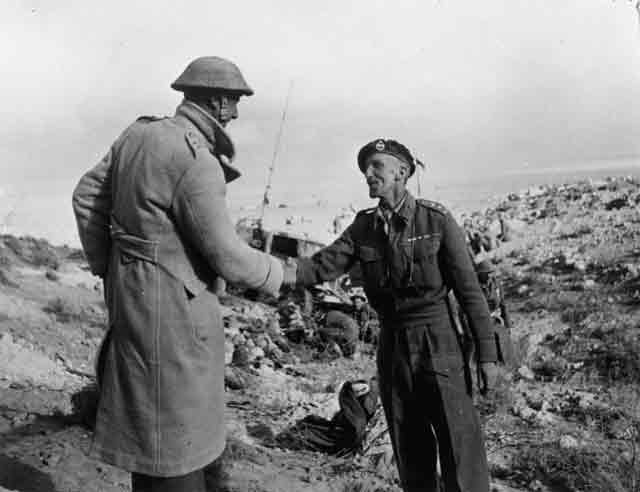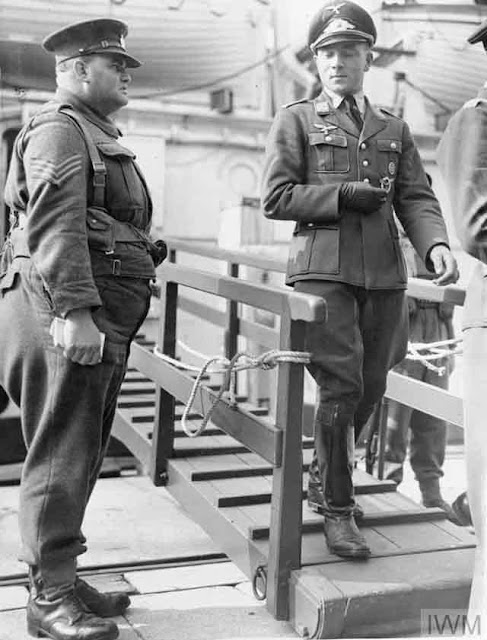Friday 10 October 1941
 |
| Evacuees from Leningrad - some of the lucky few able to fly out or get on a ferry across Lake Ladoga - board a Red Air Force transport on 10 October 1941. |
Holocaust: The "
Severity Order" is issued on
10 October 1941 by Field Marshal Walther von Reichenau, commander of Sixth Army in the Army Group South sector of the Eastern Front. The "Secret" Severity Order, also known as the Reichenau Order, is one of the "smoking guns" of Wehrmacht culpability in crimes that many of its members claim were only committed by the SS. It is one of the most savage and ruthless orders issued by any military command anywhere.
 |
| Field Marshal Reichenau greets Adolf Hitler in Poland. |
The Severity Order states in part:
The most important objective of this campaign against the Jewish-Bolshevik system is the complete destruction of its sources of power and the extermination of the Asiatic influence in European civilization.
In this eastern theatre, the soldier is not only a man fighting in accordance with the rules of the art of war, but also the ruthless standard bearer of a national conception and the avenger of bestialities which have been inflicted upon German and racially related nations. For this reason the soldier must learn fully to appreciate the necessity for the severe but just retribution that must be meted out to the subhuman species of Jewry. The Army has to aim at another purpose, i. e., the annihilation of revolts in hinterland which, as experience proves, have always been caused by Jews.
The Severity Order embodies hateful language for anyone, but certainly for any soldier who only claims to be "following orders." The full text of the Severity Order is reproduced below.
 |
| A KV-1 from the Soviet 4th Tank Brigade, 1st Special Rifle Corps knocked out by German artillery near the city of Mtsensk on October 10, 1941. This is where General Guderian's Panzer Group 2 is fighting southwest of Tula. The panzers have been encountering increasingly difficult resistance on the road to Moscow from the best Soviet armor left. |
It is difficult to read the Severity Order, must less appreciate its real-world consequences on innocent people. In essence, the Severity Order not only authorizes, the Severity Order actually compels the annihilation - mass execution - of anyone who opposes German rule. The obvious implication of the Severity Order is that all people of the Jewish faith oppose German rule and thus must be eliminated simply for being Jewish. Whether or not this is true - and there is no reason to think that it is - the Severity Order imposes a virtual death sentence on any non-combatant identified as being Jewish. The Severity Order also strongly discourages any "feeding of the natives and prisoners of war who are not working for the Armed Forces from Army kitchens" and fighting any fires set by retreating Soviet troops to buildings that the Germans do not themselves intend to use.
 |
| Reichenau standing next to his command car during Operation Barbarossa. Visible behind Reichenau is the commander of the 297th Infantry Division, General of Artillery Max Pfeffer. |
The Severity Order is one of a series of extremely political orders issued by members of the Wehrmacht that were illegal under any norms of international law. As with the other "questionable" orders issued by the Wehrmacht during 1941, the Severity Order does not last long - officially. Both the Severity Order and the even more infamous Commissar Order issued by Field Marshal Keitel are rescinded on 6 May 1942. However, even if you believe that the two orders actually are negated - and not simply brushed from view with their clear import remaining - they are both in effect for well over six months. Reichenau receives a promotion to command of Army Group South in December 1941, so, obviously, the Severity Order did not hurt his career too much. However, Hitler felt that Reichenau had a bad tendency to overstep his "military problems," which certainly seemed to be the case with the Severity Order. He denied a suggestion to make Reichenau commander if the entire Germany Army, commenting only, "This officer is too political for me." Reichenau passed away unexpectedly of a heart attack on 17 January 1942, so how his career would have progressed is unknowable.
 |
| Local people gathered for the executions at Zasulye Yar pursuant to the order of the German commander of the town of Lubny on 10 October 1941. |
The Wehrmacht troops of the Sixth Army quickly take the Severity Order to heart. On the same day that the Severity Order is issued, the German commander of Lubny, Ukraine, east of Kyiv (about midway to Poltava on the main road), orders all Jews from the area to assemble on the 15th or 16th of October at an area outside of town named Zasulye Yar. There and then, approximately 4500 people are executed by Sonderkommando 4a and local auxiliaries. This is done in a similar fashion to the previous executions at Babi Yar.
 |
| A Heinkel He 111H on a torpedo training exercise, 10 October 1941. |
The Severity Order becomes a very hot topic after World War II. Reichenau, who perished not long after its issuance, does not have to answer for it (at least to earthly justice), but others do. Field Marshal Gerd von Rundstedt, commander of Army Group South and thus Reichenau's immediate superior, must approve the Severity Order before it is issued. Rundstedt not only approves the Severity Order, but he also urges all of the other army commanders in his command to issue similar orders (Rundstedt claims that he knows nothing about the Severity Order when testifying on his own behalf at the Nuremberg trials). It is unclear what General Hoth, commander or 17th Army, and General von Manstein, commander of 11th Army, do with this advice, but, apparently, they let the Severity Order pass in silence.
 |
| A Canada National Railways locomotive at Kamloops Junction, BC, on 10 October 1941 (Bud Laws Collection at Trainweb.org). |
Below is the full text of the secret order issued by Field Marshal von Reichenau on 10 October 1941. This was appended to a more innocuous order.
SECRET!
Army H. Q., 10.10.41
Army Command 6., Sec. Ia-A. 7
Subject: Conduct of Troops in Eastern Territories.
Regarding the conduct of troops towards the Bolshevistic system, imprecise ideas are still prevalent in many cases. The most essential aim of war against the Jewish-Bolshevistic system is the complete destruction of their means of power and the elimination of Asiatic influence from the European culture. In this connection, the troops are facing tasks which exceed the onesided routine of soldiering. The soldier in the eastern territories is not merely a fighter according to the rules of the art of war but also a bearer of ruthless national ideology and the avenger of bestialities which have been inflicted upon German and racially related nations.
Therefore the soldier must have full understanding for the necessity of a severe but just revenge on subhuman Jewry. The Army has to aim at another purpose, i. e., the annihilation of revolts in hinterland which, as experience proves, have always been caused by Jews.
The combating of the enemy behind the front line is still not being taken seriously enough. Treacherous, cruel partisans and unnatural women are still being made prisoners of war and guerilla fighters dressed partly in uniforms or plain clothes and vagabonds are still being treated as proper soldiers and sent to prisoner-of-war camps. In fact, captured Russian officers talk even mockingly about Soviet agents moving openly about the roads/ and very often eating at German field kitchens. Such an attitude of the troops can only be explained by complete thought-lessness, so it is now high time for the commanders to clarify the meaning of the present struggle.
The feeding of the natives and of prisoners of war who are not working for the Armed Forces from Army kitchens is an equally misunderstood humanitarian act as is the giving of cigarettes and bread. Things which the people at home can spare under great sacrifices and things which are being brought by the Command to the front under great difficulties, should not be given to the enemy by the soldier not even if they originate from booty. It is an important part of our supply.
When retreating the Soviets have often set buildings on fire. The troops should be interested in extinguishing of fires only as far as it is necessary to secure sufficient numbers of billets. Otherwise, the disappearance of symbols of the former bolshevistic rule even in the form of buildings is part of the struggle of destruction. Neither historic nor artistic considerations are of any importance in the eastern territories. The command issues the necessary directives for the securing of raw materials and plants, essential for the war economy. The complete disarming of the civil population in the rear of the fighting troops is imperative considering the long and vulnerable lines of communications. Where possible, captured weapons and ammunition should be stored and guarded. Should this be impossible because of the situation of the battle so the weapons and ammunition will be rendered useless. If isolated partisans are found using firearms in the rear of the army drastic measures are to be taken. These measures will be extended to that part of the male population who were in a position to hinder or report the attacks. The indifference of numerous apparently anti-soviet elements which originates from a "wait and see" attitude, must give way to a clear decision for active collaboration. If not, no one can com-plain about being judged and treated a member of the Soviet System.
The fear of the German counter-measures must be stronger than the threats of the wandering Bolshevistic remnants. Being far from all political considerations of the future the soldier has to fulfill two tasks:
1. Complete annihilation of the false Bolshevistic doctrine of the Soviet State and its armed forces.
2. The pitiless extermination of foreign treachery and cruelty and thus the protection of the lives of military personnel in Russia.
This is the only way to fulfil our historic task to liberate the German people once forever from the Asiatic-Jewish danger.
Commander in Chief
(Signed) von Reichenau
Field Marshal.
October 1941October 1, 1941: Germans and Finns Advance in USSROctober 2, 1941: Operation Typhoon BroadensOctober 3, 1941: Air Battles Near MoscowOctober 4, 1941: Stalin Contemplates DefeatOctober 5, 1941: Hoth Goes SouthOctober 6, 1941: First Snowfall After DarkOctober 7, 1941: Stalin Gets ReligionOctober 8, 1941: FDR Promises Stalin Aid October 9, 1941: FDR Orders Atomic Bomb ResearchOctober 10, 1941: Reichenau's Severity OrderOctober 11, 1941: Tank Panic in MoscowOctober 12, 1941: Spanish Blue Division at the FrontOctober 13, 1941: Attack on MoscowOctober 14, 1941: Germans Take KalininOctober 15, 1941: Soviets Evacuate OdessaOctober 16, 1941: Romanians Occupy OdessaOctober 17, 1941: U-568 Torpedoes USS KearnyOctober 18, 1941: Tojo Takes TokyoOctober 19, 1941: Germans Take MozhayskOctober 20, 1941: Germans Attack Toward TikhvinOctober 21, 1941: Rasputitsa Hits RussiaOctober 22, 1941: Germans Into Moscow's Second Defensive LineOctober 23, 1941: The Odessa MassacreOctober 24, 1941: Guderian's Desperate Drive NorthOctober 25, 1941: FDR Warns Hitler About MassacresOctober 26, 1941: Guderian Drives Toward TulaOctober 27, 1941: Manstein Busts LooseOctober 28, 1941: Soviet ExecutionsOctober 29, 1941: Guderian Reaches TulaOctober 30, 1941: Guderian Stopped at TulaOctober 31, 1941: USS Reuben James Sunk2020






